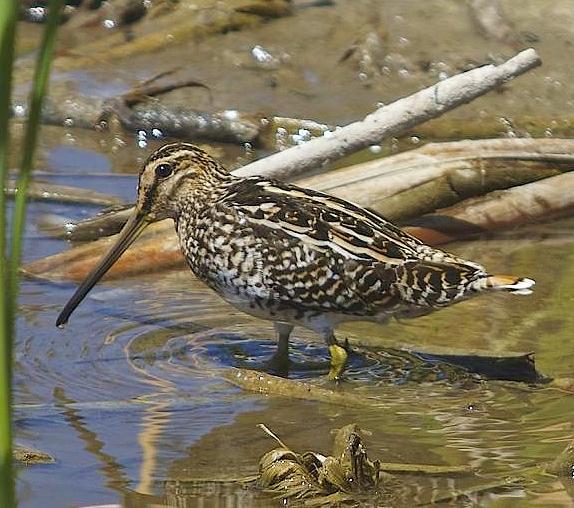 |
| Photo by Ronald Bontrop (Biodiversity4all) |
Common name:
African snipe (en); narceja-africana (pt); bécassine africaine (fr); agachadiza africana (es); Afrikanische bekassine (de)
Taxonomy:
Order Charadriiformes
Family Scolopacidae
Range:
This species has scattered breeding populations along eastern and southern Africa, in Ethiopia, Kenya, Zambia, Zimbabwe and South Africa, but can winter over all the regions between these breeding areas.
Size:
African snipes are 30-32 cm long and weigh 105-145 g.
Habitat:
These birds are found in fresh water or brackish wetlands, such as vleis, marshes, highland bogs, wetlands around artificial water bodies, ditches, inland deltas, shallow estuaries and lagoons, swampy lake edges, seasonally flooded grasslands and wet moorlands. They are mostly found at altitudes of 1.500-4.000 m, but can be found on lowland wetlands.
Diet:
They feed by probing soft mud with their long bill, taking worms, insect larvae, small molluscs, crustaceans and seeds.
Breeding:
African snipes can breed all year round. They are monogamous, solitary nesters and the nest is built by the female, consisting of a saucer-shaped grass structure placed in a tuft of grass or rushes. There she lays 1-3 eggs, which are incubated for 19-21 days. The chicks are cared for by both parents, fledging 19-20 days after hatching and probably becoming fully independent soon afterwards.
Conservation:
IUCN status -LC (Least Concern)
This species has a large but scattered breeding range. The population trend is difficult to determine because of uncertainty over the impacts of habitat modification on population sizes. The main threats are habitat loss and degradation through agricultural expansion, encroachment, overgrazing, burning and the drainage of wetlands. Extreme draughts and outbreaks of avian botulism may also pose a threat to this species. Despite theses, overall the African snipe is not considered threatened at present.







